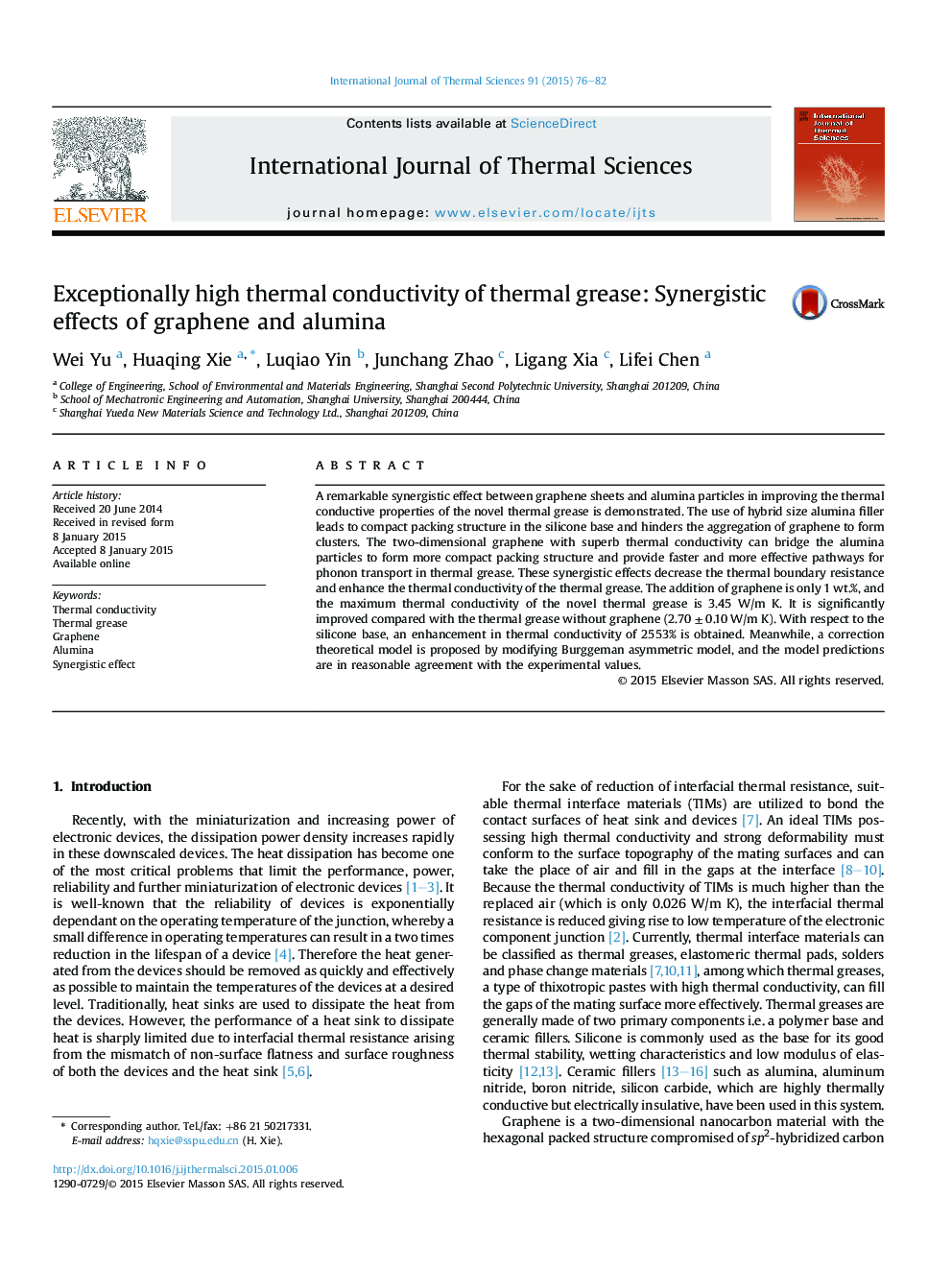| Article ID | Journal | Published Year | Pages | File Type |
|---|---|---|---|---|
| 7060963 | International Journal of Thermal Sciences | 2015 | 7 Pages |
Abstract
A remarkable synergistic effect between graphene sheets and alumina particles in improving the thermal conductive properties of the novel thermal grease is demonstrated. The use of hybrid size alumina filler leads to compact packing structure in the silicone base and hinders the aggregation of graphene to form clusters. The two-dimensional graphene with superb thermal conductivity can bridge the alumina particles to form more compact packing structure and provide faster and more effective pathways for phonon transport in thermal grease. These synergistic effects decrease the thermal boundary resistance and enhance the thermal conductivity of the thermal grease. The addition of graphene is only 1 wt.%, and the maximum thermal conductivity of the novel thermal grease is 3.45 W/m K. It is significantly improved compared with the thermal grease without graphene (2.70 ± 0.10 W/m K). With respect to the silicone base, an enhancement in thermal conductivity of 2553% is obtained. Meanwhile, a correction theoretical model is proposed by modifying Burggeman asymmetric model, and the model predictions are in reasonable agreement with the experimental values.
Related Topics
Physical Sciences and Engineering
Chemical Engineering
Fluid Flow and Transfer Processes
Authors
Wei Yu, Huaqing Xie, Luqiao Yin, Junchang Zhao, Ligang Xia, Lifei Chen,
